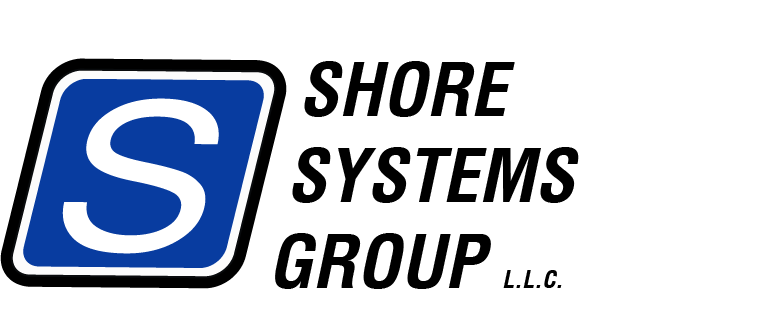Aggregate Piers: A Comprehensive Guide
Geopier Diagram
What Are Aggregate Piers?
Aggregate piers, also known as vibro stone columns (VSC), are a type of ground improvement technique used in subsurface construction. They are constructed by drilling or driving into the soil to create a cavity, which is then filled with compacted aggregate. These piers serve to increase the load-bearing capacity of the soil, mitigate liquefaction, and reduce foundation settlement.
Widely applied in deep foundations, aggregate piers offer a cost-effective and environmentally friendly alternative to traditional methods. By using recycled materials and producing minimal vibration, this solution provides significant benefits for projects requiring soil stabilization.
Benefits of Aggregate Piers
1. Increased Bearing Capacity
Aggregate piers improve the soil's ability to support loads, often reducing the size of footings required for shallow foundation construction.
2. Reduced Settlement
By compacting the soil and distributing loads more evenly, they significantly minimize foundation settlement.
3. Mitigated Liquefaction
For projects in seismic zones, aggregate piers help stabilize the soil by reducing its susceptibility to liquefaction during an earthquake.
4. Enhanced Shear Strength and Stiffness
These piers increase the soil’s stiffness and shear strength, making it more resistant to deformation and shear forces.
5. Environmental and Economic Advantages
Aggregate piers are often installed using recycled materials, making them an environmentally sustainable option. Additionally, the process is quick and economical, allowing construction schedules to proceed without major delays.
How Effective Are Aggregate Piers?
The effectiveness of aggregate piers lies in their ability to transform weak soil into a stable foundation suitable for construction. Load tests often confirm significant improvements in soil performance metrics, such as bearing capacity and settlement reduction.
For projects requiring soil compaction in sand or land reclamation, aggregate piers are especially effective. They enable the use of standard shallow foundations in treated fills, contributing to both cost savings and structural reliability.
Applications for Aggregate Piers
Aggregate piers are used in a wide variety of applications, including:
Commercial and Industrial Buildings: Stabilizing foundations for large structures.
Infrastructure Projects: Supporting roads, railways, and bridges.
Land Reclamation: Improving soil for use in coastal and reclaimed areas.
Residential Developments: Creating stable ground for homes and small buildings.
Seismic Regions: Mitigating risks associated with soil liquefaction.
Their versatility and adaptability to different soil conditions make aggregate piers a preferred choice for deep foundation projects.
Geopiers Installation Process
The installation of aggregate piers involves several precise steps to ensure effectiveness:
Site Analysis: Soil conditions are evaluated to determine the appropriate installation method.
Drilling or Driving: A cavity is created in the soil using specialized equipment.
Placement of Aggregate: Aggregates are introduced into the cavity in stages.
Compaction: Each layer is compacted using vibratory or static forces to enhance soil strength.
Verification: Load tests are conducted to confirm the performance of the piers.
Depending on soil conditions, one of three methods may be employed for installation: dry top feed, dry bottom feed, or wet top feed.
Dry Top Feed Columns for Cohesive Soils
Dry top feed columns are ideal for cohesive soils, such as clay or silty clay. The process involves creating a cavity with minimal water or drilling fluid and filling it with dry aggregate.
Advantages:
Suitable for shallow to moderate depths.
Simple and cost-effective.
Generates minimal waste.
This method is widely used in residential and commercial projects requiring soil improvement in cohesive soils.
Dry Bottom Feed Columns for Fine-Grained Soils
When dealing with fine-grained soils, such as silty sands or sandy silts, dry bottom feed columns offer superior performance. Aggregate is introduced directly at the bottom of the borehole, ensuring optimal compaction.
Benefits:
Increased shear strength in fine-grained soils.
Reduced permeability.
Effective for mitigating liquefaction.
Dry bottom feed columns are especially effective in applications where reduced settlement is critical.
Wet Top Feed Columns for Deep Treatment of Unstable Soils
Wet top feed columns are used for deep soil treatment, particularly in unstable or loose soils. This method involves the use of water or drilling fluid to aid in the drilling process and aggregate placement.
Advantages:
Allows for deeper penetration (up to 15 meters).
Effective in treating highly unstable soils.
Facilitates quick installation for large-scale projects.
This method is commonly employed in infrastructure projects, such as roads and bridges, requiring significant soil stabilization.
Why Choose Aggregate Piers for Your Project?
Aggregate piers provide numerous advantages over traditional foundation methods:
Economical: They reduce the overall project cost by allowing for smaller footings and faster construction timelines.
Adaptable: Suitable for a wide range of soil conditions and depths.
Environmentally Friendly: Uses recycled materials and minimizes disturbance to the surrounding environment.
Efficient: Rapid installation allows subsequent structural work to begin quickly.
Low Impact: Quiet operation with minimal vibration ensures compatibility with urban or sensitive environments.
Shore Systems Group, LLC: Your Deep Foundation Specialists
At Shore Systems Group, LLC, we specialize in the installation of subsurface construction solutions. Our team of experts uses advanced techniques and equipment to ensure the stability and safety of your project.
Whether you need load tests, soil improvement, or guidance of applications, we are here to help. Contact us today to learn more about how we can benefit your next project.
With Shore Systems Group, LLC, achieving a stable and reliable foundation has never been easier. Let us help you lay the groundwork for success.

